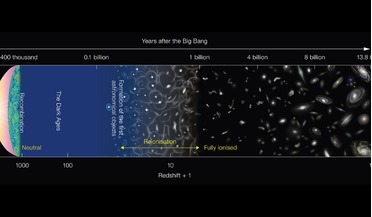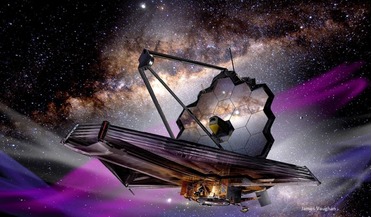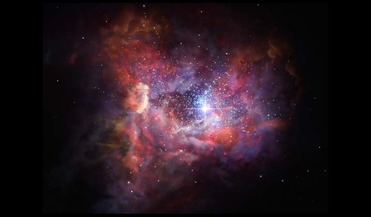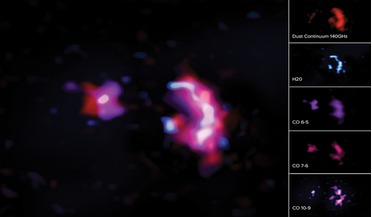 29 January 2018
Astronomers discover a fossil of the Reionisation era
29 January 2018
Astronomers discover a fossil of the Reionisation era
... is critical, as they reveal information about the end of the cosmic dark ages, the first stars and galaxies, and the structure of our Universe as we see it today. More on this research can be found at https://arxiv.org/pdf/...
 May 2022
Essential guide to the James Webb Space Telescope
May 2022
Essential guide to the James Webb Space Telescope
... this expanding Universe to reach us, it is not immune to this stretching - its wavelength slowly increases. Light from the first stars and galaxies may have been emitted at wavelengths we could see with our eyes, but now the light has...
 08 March 2017
The most distant galaxy yet observed by ALMA gives insight into first stars
08 March 2017
The most distant galaxy yet observed by ALMA gives insight into first stars
... is perfectly suited to help study the era when the first stars and galaxies “switched on.” “With ALMA, the prospects for performing deeper and more extensive observations of similar galaxies at these early times are very promising,” says Ellis...
 03 November 2021
Astronomers spot the most distant detection of water in a star-forming galaxy
03 November 2021
Astronomers spot the most distant detection of water in a star-forming galaxy
... just 780 million years old—roughly 5-percent of its current age—and the first stars and galaxies were being born. But despite this youthful age, it appears galaxies were already pumping out molecules shortly after the elements were...
 22 December 2016
Faint signals of water in the nearby Universe can now be detected by ALMA
22 December 2016
Faint signals of water in the nearby Universe can now be detected by ALMA
...diverse area of astronomical phenomena from the first stars and galaxies that emerged from the cosmic "dark ages" billions of years ago to mapping the gas and dust in the Milky Way and other galaxies and even to analysing gas from an erupting volcano...
 22 September 2021
Telescope built by Karoo locals releases data to astronomers around the world
22 September 2021
Telescope built by Karoo locals releases data to astronomers around the world
... team comprises 10 artisans. Astronomers are eager to understand how the universe reached conditions for the very first stars and galaxies to form and HERA will help them understand how it happened. “Even the most powerful optical...